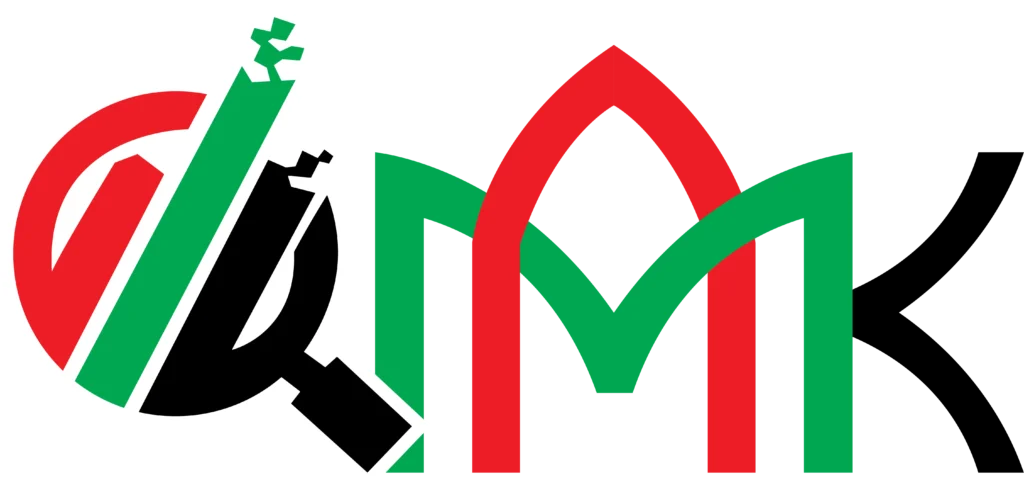Free Zone Corporate Tax in UAE: Clarity, Rules & Action
The UAE attracts investors with strong infrastructure, modern ports, and stable policy. The country also runs a federal corporate tax system that took effect in 2023. Free zones sit inside this new landscape and still support growth with clear incentives. This article explains how free zone corporate tax works in simple, practical terms. It follows current guidance under Ministerial Decision No. 229 of 2025 (Qualifying & Excluded Activities) and Decision No. 230 of 2025 (Recognised Price Reporting Agencies), which replace earlier MD 265 of 2023. Your team will learn what qualifies, what does not, how to meet substance tests, how to manage de-minimis limits, and how to file on time with low risk.
Free Zones in the UAE: Purpose and Value
A free zone is a defined area with its own rules that sit alongside federal law. Each zone hosts industries, trade routes, or tech clusters. The zones drive three goals:
- Attract FDI: The zone invites global capital with clear permits and incentives.
- Ease trade: The zone speeds import and export with efficient customs.
- Diversify the economy: The zone brings new sectors beyond oil and gas.
Your company can use these platforms to scale across the GCC, Africa, and South Asia. Your plan should link logistics, staffing, and compliance with the zone’s rule book.
What Is the Free Zone Corporate Tax Regime?
A free zone person is a business formed and operating inside a designated free zone. The federal corporate tax regime recognizes this status and gives access to a 0% rate on qualifying income if strict conditions are met. If an entity fails any condition, income that falls outside the rules is taxed at the standard 9% rate.
Two basic profiles exist in the law:
- Natural person: An individual who earns business income under a license. Business income above a set threshold can fall under corporate tax. Employment income and passive investment income without a license sit outside.
- Juridical person: A company, partnership, or other legal form. It faces corporate tax on taxable profits at the federal level, with special treatment when it qualifies as a Qualifying Free Zone Person (QFZP).
Your first task is to map your structure, license, and flows to the correct profile.
Who Pays: Entity Types and Tax Reach
- Mainland companies: Tax applies on taxable profit from business carried on in the UAE; the standard rate is 9% above AED 375,000.
- Free zone companies: Income that meets qualifying criteria may be taxed at 0%. Non-qualifying income is taxed at 9%.
- Foreign companies with a permanent establishment (PE): UAE-sourced income tied to a PE can be taxed in the UAE.
- Individuals with a commercial license: Business income can be in scope when thresholds apply.
The right classification helps you design a defensible position from day one.
Special Rules for Free Zone Companies
A free zone company can access the 0% rate on qualifying income if it meets all regime tests. It must also keep robust documentation and respect transfer pricing. Where income does not qualify, the 9% rate applies. The company should separate income streams, cost bases, and disclosures so each item is clear.
Core ideas you must follow:
- The business keeps adequate substance in the zone.
- The business earns qualifying income from permitted activities.
- The business has not elected into the standard regime.
- The business complies with transfer pricing and maintains files.
- The business follows economic substance rules and avoids excluded activities.
Mainland vs. Free Zone: A Quick Contrast
- Tax rate: Mainland uses 9% above AED 375,000; free zone uses 0% on qualifying income and 9% on the rest.
- Activity scope: Mainland can trade across the UAE; free zone trading into mainland may need a distributor or a branch, and earnings can switch to 9% if rules are not met.
- Compliance: Both follow FTA rules, but the free zone status adds extra filters for activity, counterparties, and substance.
Your plan should match the route to market. A misstep can turn 0% income into 9% income.
Qualifying Free Zone Person (QFZP): The Six Tests
To hold QFZP status, your entity must meet these six conditions during each tax period:
- Adequate substance: You keep people, space, and operations inside the zone that match your activity.
- Qualifying income: Your revenue arises from activities and counterparties that meet the list under the current decisions.
- No election for standard tax: You have not opted into the regular 9% regime.
- Transfer pricing compliance: You apply the arm’s-length principle and keep Master and Local Files when thresholds apply.
- Economic Substance Regulations (ESR): Your core income-generating activities (CIGA) take place in the zone.
- No excluded activities: You avoid activities that the decisions mark as excluded from the 0% benefit.
Fail one test and the 0% treatment can fall away for that period.
Qualifying Income vs. Non-Qualifying Income
Qualifying income can include revenue from permitted activities conducted in or from a free zone, income from other free zone persons, and certain distribution or manufacturing flows in Designated Zones. The exact scope follows the current ministerial decisions.
Illustrative examples:
- Qualifying: Outbound sales where goods move from a Designated Zone to a foreign customer; logistics services to a free zone company; specified treasury functions within the group when permitted.
- Non-qualifying: Sales to UAE mainland customers that do not meet conditions; revenue from excluded activities; income that breaks transfer pricing or substance rules.
Keep a clean ledger that tags each invoice as qualifying or non-qualifying. This control supports filings and audits.
Excluded Activities: Know the Red Lines
Some activities cannot enjoy 0%. Common red lines include:
- Leasing of mainland real estate or other immovable property outside the zone’s scope.
- Certain banking or insurance services that do not fit the framework.
- Domestic retail in mainland that lacks the free zone qualifying profile.
- Investment returns that the rules classify as non-qualifying.
If you touch an excluded activity, you track it, tax it at 9%, and ring-fence it from the 0% stream.
Adequate Substance and Outsourcing
You must carry out CIGA inside the free zone. You also pass an adequacy test for assets, staff, and operating spend. You may outsource to a related party or third party within the zone if you keep control and oversight. Your minutes, policies, and SLAs should prove real mind-and-management inside the zone.
Practical actions:
- Maintain a staffed office that matches your license.
- Record decision-making in the zone with board minutes.
- Keep time sheets and service logs for outsourced tasks.
- Tie costs and staff to the activities that earn the 0% income.
The De-Minimis Requirement: Keeping the 0%
A QFZP may earn a small share of non-qualifying income and keep the 0% on qualifying income if it stays within de-minimis. The threshold is the lower of 5% of total revenue or AED 5,000,000 per tax period. If non-qualifying income rises above this threshold, the entity loses 0% eligibility for that and, typically, subsequent periods per the regime.
Formula:
Non-Qualifying Income ÷ Total Revenue × 100 ≤ 5% and Non-Qualifying Income ≤ AED 5,000,000.
Important exclusions in the calculation can apply (for example, some immovable property income in a free zone or income linked to permanent establishments), so you must apply the decisions carefully and keep support.
Tax Rates and Pillar Two Considerations
- 0%: Qualifying income of a compliant QFZP.
- 9%: Non-qualifying taxable income and income that fails QFZP tests.
- Large multinationals: Groups in scope of global minimum tax rules should assess Pillar Two impacts and Domestic Minimum Top-Up Tax mechanics where relevant.
You should align transfer pricing, substance, and global minimum tax planning to avoid surprises.
Registration, Filing, and Record-Keeping
Registration steps:
- Map activities and counterparties.
- Register on the EmaraTax portal and obtain a TRN.
- Classify income streams as qualifying or non-qualifying.
- Prepare policies and intercompany agreements that match the facts.
- Set transfer pricing controls and documentation calendars.
Filing duties:
- File the annual corporate tax return within 9 months after the end of the financial year.
- Pay any tax due within the same 9-month window.
- Keep books, contracts, and working papers. Maintain records commonly for 7 years from the end of the period.
- Submit disclosures, elections, or declarations requested by the FTA on time.
- Align ESR filings and transfer pricing documentation with the return.
A good calendar and document library will cut risk and save cost during review.
What Documents You Should Prepare
- Audited or management financial statements.
- Sales and purchase ledgers split by qualifying status.
- Intercompany agreements and service level frameworks.
- Transfer pricing files (Master and Local Files when thresholds apply).
- Substance evidence: leases, payroll, staff lists, and minutes.
- Customs and logistics records for Designated Zone flows.
- Bank statements and treasury policy for any cash management.
- Licenses and corporate registers.
You keep the set current, consistent, and accessible.
Filing Timeline at a Glance
- Tax registration: soon after commencing activities under FTA guidance.
- Tax return: within 9 months after the financial year end.
- Payment: within 9 months after the year end.
- Voluntary disclosure: submit as soon as you find an error, ideally before audit notice.
- Deregistration: within 30 days after ceasing business.
Tie these dates to your ERP close so numbers and returns match.
Penalties: Why Discipline Pays
General corporate tax penalties can apply to free zone and mainland businesses alike. They can cover failures to keep records, late filings, late payments, missed deregistration, language requirements, and audit support. Interest can accrue on unpaid balances. A routine control set is cheaper than a late rebuild.
Simple control ideas:
- Month-end tagging of qualifying vs. non-qualifying income.
- Quarter-end de-minimis check with a written sign-off.
- Annual transfer pricing refresh with new comparables.
- ESR calendar with responsibility owners.
How Free Zone Rules Can Support Your Plan
When your entity meets QFZP tests, the regime can:
- Lower effective tax on permitted income.
- Preserve cash for reinvestment.
- Enable regional hubs for logistics, distribution, and services.
- Promote governance through transparent policies and controls.
Your plan should start with activity mapping, move through substance and pricing, and finish with clean filings.
Practical Playbook for CFOs and Founders
- Define your flows: Who do you sell to and where do goods move?
- Pick the license and zone: Match license to actual operations.
- Design policy: Set margins and rate cards that teams can execute.
- Staff the office: Place real decision-makers and keep minutes.
- Build files: Prepare Master and Local Files if in scope.
- Monitor de-minimis: Track the ratio each quarter.
- File on time: Submit the return and pay any tax due.
- Review yearly: Refresh comparables and test substance gaps.
This cycle supports both growth and assurance.
What Can Help – Mubarak Al Ketbi (MAK) Auditing
Mubarak Al Ketbi (MAK) Auditing helps your team plan, document, and defend a free zone position. We map your activities, design a compliance roadmap, and align transfer pricing with substance and filings. We prepare intercompany contracts, set dashboards for de-minimis, and support you during FTA queries. We work with finance, tax, legal, and operations so policy turns into daily practice.
For more information:
- Visit our office: Saraya Avenue Building – Office M-06, Block/A, Al Garhoud – Dubai – United Arab Emirates
- Contact/WhatsApp: +971 50 276 2132













